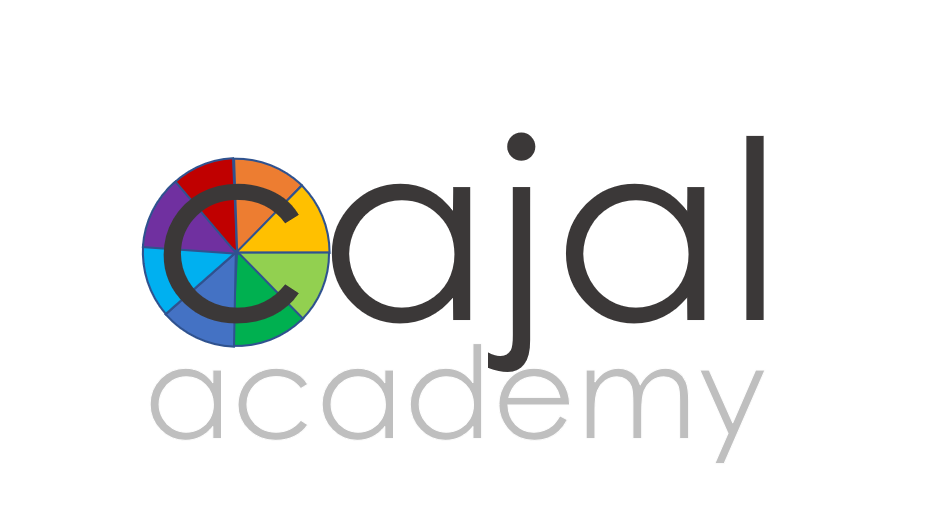Turning Expectations Upside Down: Who are 2e Kids?
Cajal Academy embraces the diversity of twice exceptional learners.
Twice exceptional children have high cognitive profiles including intellectual or artistic gifts, alongside a learning, social, emotional, neurological or physiological difference.* These could include dyslexia, dysgraphia, dyspraxia, ADHD, anxiety disorders, sensory integration challenges, bimodal distribution of intelligence, the effects of prior trauma, social communication disorder, autism spectrum disorder, immunological and/or neurological disorders creating variable availability to learn and many, many more. In short, their talents are as diverse as their diagnoses, defying one-size-fits-all approaches and straining traditional education approaches and settings.
Nonetheless, there is a tendency to think of ‘twice exceptional’ children as a monochromatic profile or personality type. They are often painted, narrowly, as having “genius level IQ” and reading by the age of two, yet physically and socially awkward. Certainly, these children are twice exceptional—yet the profiles and personalities of 2e kids are as diverse as is the case for any other cohort of kids. Some 2e children soar at the top of their class; others lag several grade levels behind. Some present as leaders socially and in the arts; others have yet to discover or ‘turn on’ their internal light. Some will have been identified already as “gifted”—but evidence emerging about the role of socio-economic and racial bias in those determinations points to the danger of relying on that approach. Relying on full scale IQ is similarly misleading, as this incorporates factors (including working memory and processing speed) that are highly-influenced by transient states such as depression and anxiety—two conditions that run rampant in 2e populations. Meanwhile, diagnostic labels such as ADHD tell us only the clinically-observed symptoms, without identifying the neurogenic cause that drives them—and thus fails to tell us which challenges can be addressed, and which will persist.
How then can we identify these children? At Cajal Academy, we believe that a comprehensive yet data-backed approach is required in order to understand the often highly-splintered profiles of 2e kids. Leveraging the scientific insights of neuropsychology and guided by internationally-recognized neuropsychologist Steven Mattis, PhD, A.B.P.P., we understand twice exceptional kids by taking a comprehensive review of their entire profile. This includes a deep dive into the data in their evaluations, including not just the levels but the array of specific cognitive strengths and weaknesses. This approach reveals the unrealized potential, not just those skills that the child is already able to access.
We believe that this approach is important for all children, but that it is essential for twice exceptional kids. Rather than the even, average level of neuropsychological scores that is typical in other student populations, many twice exceptional kids have a “bimodal” distribution of intelligence, with areas of outlying strength that often are not evenly matched across the board. In some cases, there may be as much as 80-90 point gaps between different elements of their neuropsychological profiles.
This vast gulf creates an inherently dysfunctional learning experience for the child, setting up rocky cliff faces that must be navigated in order to learn how to access their strengths while fording the valleys between them. Even where the low-lying skills are still within what is normed as the “average” range, the discrepancy itself can create a learning profile that feels, to the child, unmanageable. Absent specialized instruction in how to predict which tasks will call upon their areas of weakness and adjust the task to better align with their strengths, twice exceptional children can easily fall into a state of preemptive failure, afraid to take the risks required to develop their strengths. The result is high rates of long-term anxiety, depression and under-achievement despite their high potential.
Identification procedures that rely on either “full scale” IQ on the one hand, or looking at each score in isolation on the other, will miss both the inherent dysfunction in a highly asynchronous profile and the high potential that can be achieved if the child is coached in how to understand and take charge of their own learning profile. Thus, classically twice exceptional children are doubly-under-identified for gifted and special education services alike.
As part of Cajal Academy’s admissions process, we are developing new frameworks to objectively identify both the promise and the challenges that stand in a child’s way. To do this, we set aside diagnostic labels and go straight to the data underlying each child’s profile, across their several evaluations, and develop a picture of how this child travels through learning, social, emotional and physiological tasks—and even how those combinations might have affected performance on the evaluative tests themselves. Within this, we look specifically for high verbal reasoning skills, because these are the skills that are most critical to accessing our curriculum. You can find out more about the profiles and students we serve here.
Why don’t we use the term “gifted”?
Most organizations define “twice exceptional” children as being “gifted”, and having a disability. The term “gifted” has become highly divisive within educational and community spheres alike. Many associate the term with elitism, or with ‘hoarding’ resources and opportunities that should be extended to all. In our experience, the various processes employed in different districts and states to identify “gifted” children often lead to under-identification of the intended cohort, whether due to their reliance on full scale IQ or on classroom performance or their susceptibility to inherent bias on grounds of race and socio-economic class. Thus, Cajal Academy does not limit its admissions decisions to children who have been identified as “gifted,” nor do we incorporate those definitions into our admissions procedure. Rather, we look to the data behind the child’s profile to ascertain whether our program is an appropriate fit for this child.


